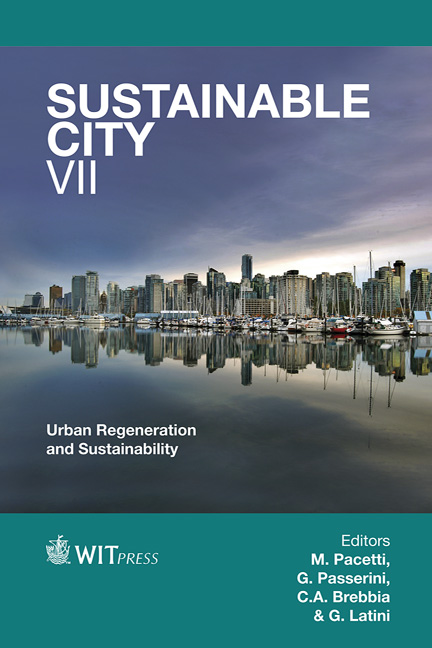RE-URB/ARCH: Urban And Architectonic Regeneration Strategies: Sustainability Models
Price
Free (open access)
Transaction
Volume
155
Pages
12
Page Range
145 - 156
Published
2012
Size
364 kb
Paper DOI
10.2495/SC120131
Copyright
WIT Press
Author(s)
G. Mondaini, C. Carluccio & R. Panariello
Abstract
Urban areas cause a set of environmental challenges, which come from the consumption of natural resources and the generation of waste and pollution. These aspects contribute to the development of social and economic imbalance, which continues to grow while demanding new solutions. Therefore urban planning and architecture needs a new and flexible approach, introducing methods and techniques which can adjust to diverse situations and imply different solutions. Architectural design assumes a central role, more relevant than the technological aspects or performances: the design begins from the urban scale, reaches the architectural composition level, for shapes and orientations, and the restoration of the existing building heritage, and finally incorporates also the technological aspects. It allows us to avoid globalizing space solutions and architecture languages, towards an approach that focuses on the specific context. The UNIVPM DICEA department has developed two different scientific researches aiming to detect sustainable models and methods of intervention within the modern city: a) a regulation to evaluate the energetic and environmental quality of Public Residential Buildings for the city of Civitanova Marche; b) a structural document finalized to urban instruments’ innovation, for what concerns the city of Fabriano. These two levels have two factors in common: 1) Both focus on cities in a transitional stage; places that express the inadequacy of modern urban planning’s techniques involving sustainability, which pursue the dynamics of a territory’s transformation but fail to manage them. 2) Both are based on the same procedure used to methodize the suggested solutions; buildings’ features become strategic, and so do their orientation and volume, in order to define the energy performance levels. It consists of the invention of a table of combination sets for urban and architectural solutions, which shows all the steps required, from the administrative system to the technical and design guidelines.
Keywords
urban regeneration, integrated process, competitive urban planning, income capture, urban densification, building retrofitting, best available building





